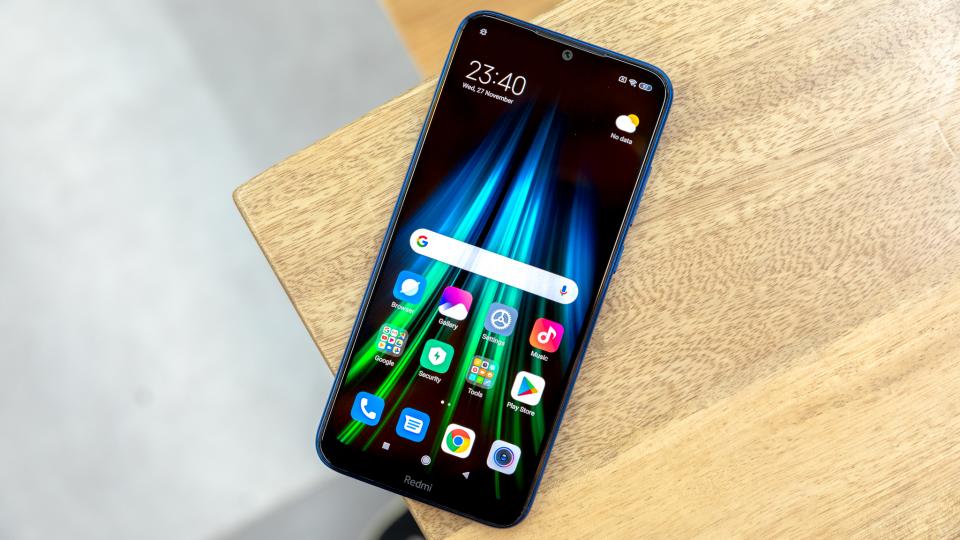
Spoiler: there isn’t one
Pros Stylish looksBrilliant camera for the price£60 cheaper than the similar Moto G8 PlusCons None at this price
Here’s something oddly impressive about the Xiaomi Redmi Note 8T. Due to scheduling difficulties, I’ve been sitting on this review for over two weeks. Upon opening it to remind myself what I was looking at again, I found it was still very much alive – indeed, it was on 56% battery.
That speaks to some impressive low-power software in the mix, and it turns out that’s just one of the many strengths the device has that belie its low cost of entry.

Xiaomi Redmi Note 8T 4+64GB Moonshadow Grey(UK VERSION)
£170.06 Buy now
Xiaomi Redmi Note 8T review: What you need to know
Although not as well known as Huawei, Xiaomi has been doing some sterling work producing punchy phones at even punchier prices. While this is mainly a boon for folks looking for flagship performance, the budget end isn’t neglected either – and that’s precisely where the Redmi Note 8T comes in.
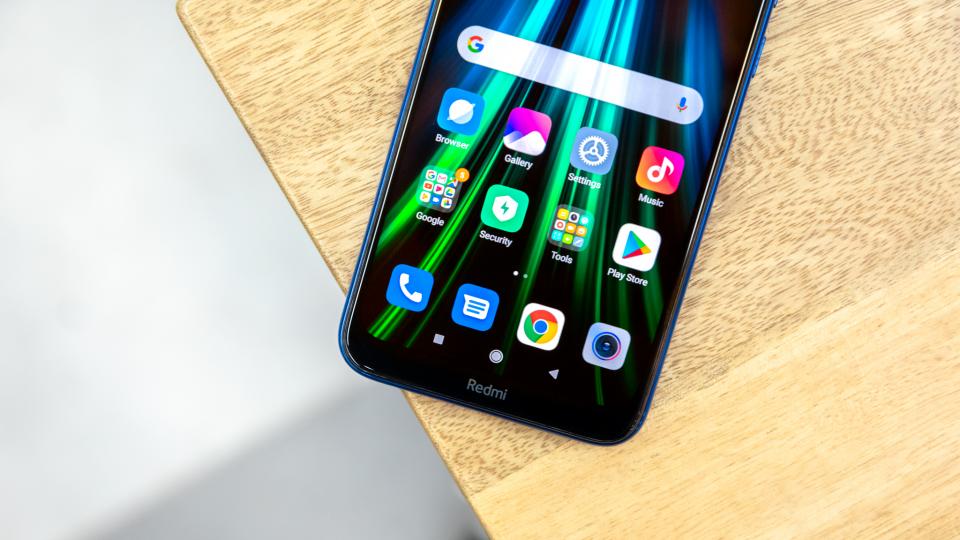
The Redmi Note 8T packs a Qualcomm Snapdragon 665 processor with 3GB or 4GB RAM, 64GB or 128GB of internal storage and a beefy 4,000mAh battery. All of this is packed into a smart looking 6.3in frame that packs no fewer than four cameras on the back.
Xiaomi Redmi Note 8T review: Price and competition
All of that is yours for £179, which feels ludicrously cheap. It only seems like yesterday when a triple-camera array would cost you £800 with the Huawei P20 Pro.
But we’re not talking anywhere near that figure, so what can you get for under £200? Well, there’s the Redmi Note 8T’s predecessor, the Note 7, which started at the same price but now sells for an even more palatable £150. Going even cheaper, the Redmi 7A is a little powerhouse at £99.
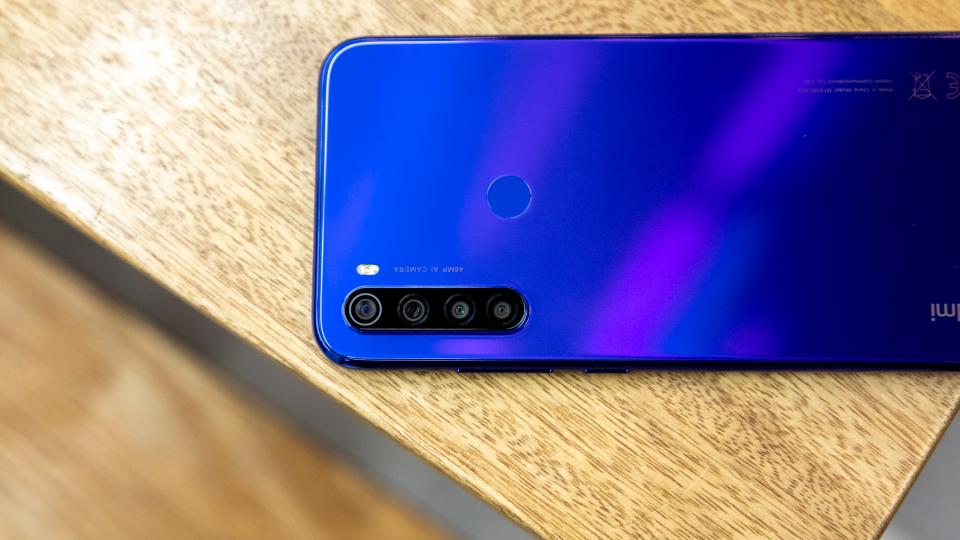
If for some reason you hate Xiaomi, then the Huawei P Smart used to be £200, but now sells for closer to £150 and the Nokia 5.1 also started at £189 but is now yours for £109. Then there’s our budget favourite, the Moto G7 Power, which cost £179 at launch but can be bought for around £120 now. The Moto G8 Plus is its successor, and sells for £220.
Finally, a pricier competitor: the Google Pixel 3a sells for £399, but actually has pretty similar performance, as you’ll see later. Its trump card is the camera, though, which alongside the early access to Android updates makes it a big recommendation by us despite its comparatively high cost.
Xiaomi Redmi Note 8T review: Design
Given Xiaomi can make its even-more-budget Redmi 7A look like a premium handset from a few years ago, it should be no surprise that the Note 8T looks more expensive than it actually is. It’s quite hefty in the hand, weighing in at 200g, but then it is packing 6.3in of screen which does a good job of minimising the bezel all the way around. Barring a few millimeters on the chin, it’s all pretty minor, meaning it requires a small circular notch to house the front-facing camera.
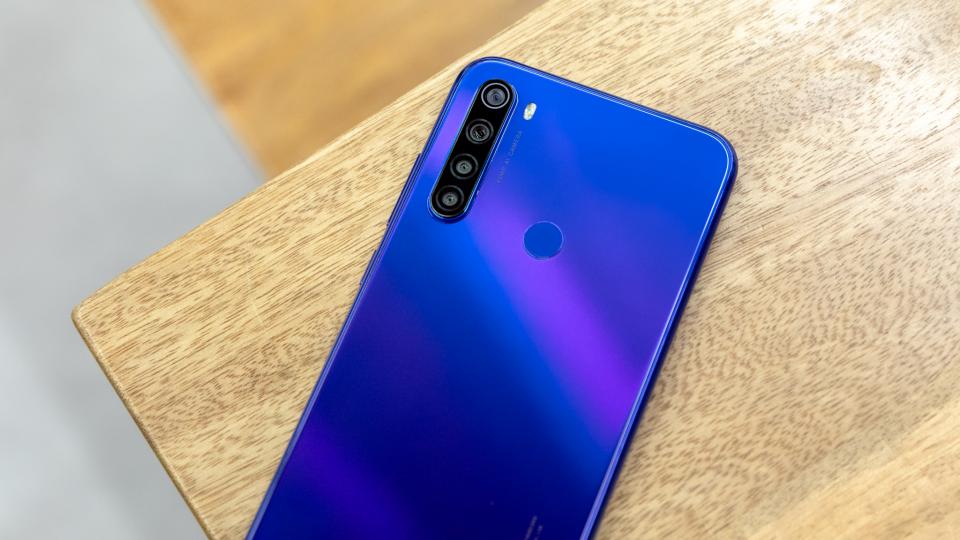
The sides are curved around the edges, which provides a sharp contrast to a back that is completely flat, barring the four camera lenses which jut out somewhat awkwardly like a set of traffic lights that have mutated an extra bulb. Across from there – and awkwardly not quite in line just to mess with fans of symmetry – is a circular fingerprint reader.
It’s not a bad look, but it does lack practicality. The cameras jutting out by a good millimeter is particularly awkward as it means the phone simply can’t be placed flat with the screen facing upwards.
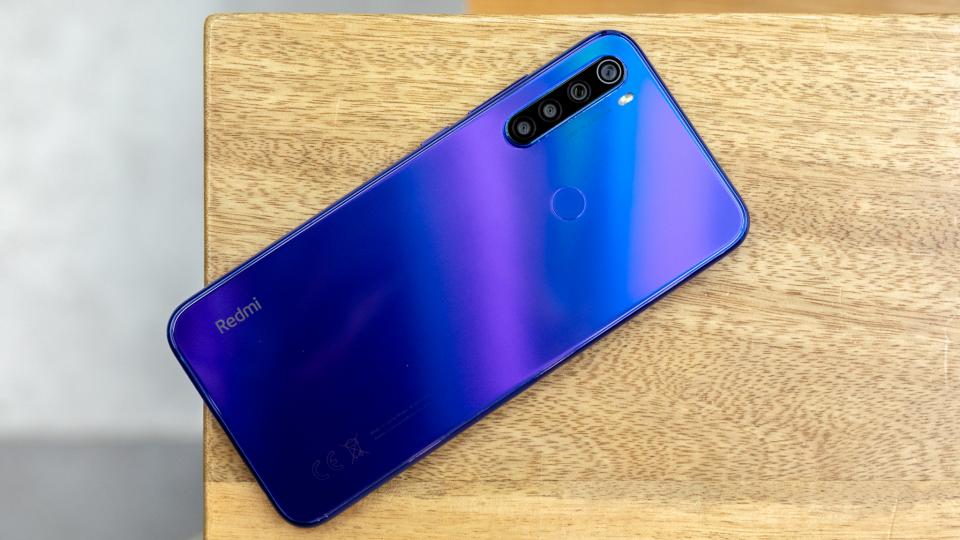
That’s a pity because it looks nice enough, and in other ways Xiaomi has stuck to consumer positive decisions, like including a 3.5mm headphone jack and expandable storage via microSD. There’s no waterproofing or wireless charging, though, but you can’t have everything for £170.
Xiaomi Redmi Note 8T review: Screen
The 6.3in screen is an IPS panel with a resolution of 2,340 x 1,080, giving it around 409 pixels per inch. Some will no doubt wish it were a 2K screen but A) at this price you’ve got no chance, and B) 1080p is more than enough for a screen of this size – you’d struggle to tell the difference, and your battery life would suffer.
So how is it as IPS screens go? Pretty good, as it turns out. It covers 95.7% of the sRGB gamut, with a volume of 96.6%. That means that colours are bright and accurate without being unnaturally vibrant as some handsets are by default. With a contrast ratio of 1,571:1, everything is very sharp too.
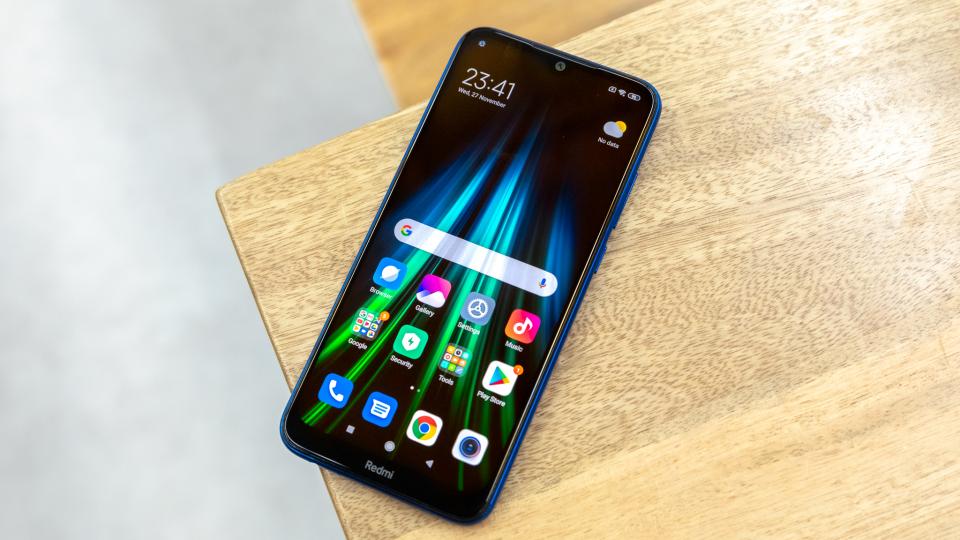
Finally: it’s bright enough to deal with unreasonable sunshine. Our colorimeter hit a peak brightness of 482cd/m2 in manual brightness, and the automatic mode hit one lumen higher when we flashed a torch on the display.
In short, it’s a great screen – and I don’t need to add the phrase “for the price” here either. It’s just an excellent screen: well done, Xiaomi.
Xiaomi Redmi Note 8T review: Performance
In terms of core specs, the Redmi Note 8T is a midranger to its core, which is pretty impressive given its sub-£200 price. A 2GHz Qualcomm Snapdragon 665 processor is backed by either 3GB or 4GB RAM and 64GB or 128GB of internal storage. That’s the same chipset we’ve recently seen in the Motorola Moto G8 Plus, which is a handset that sells for £60 more.
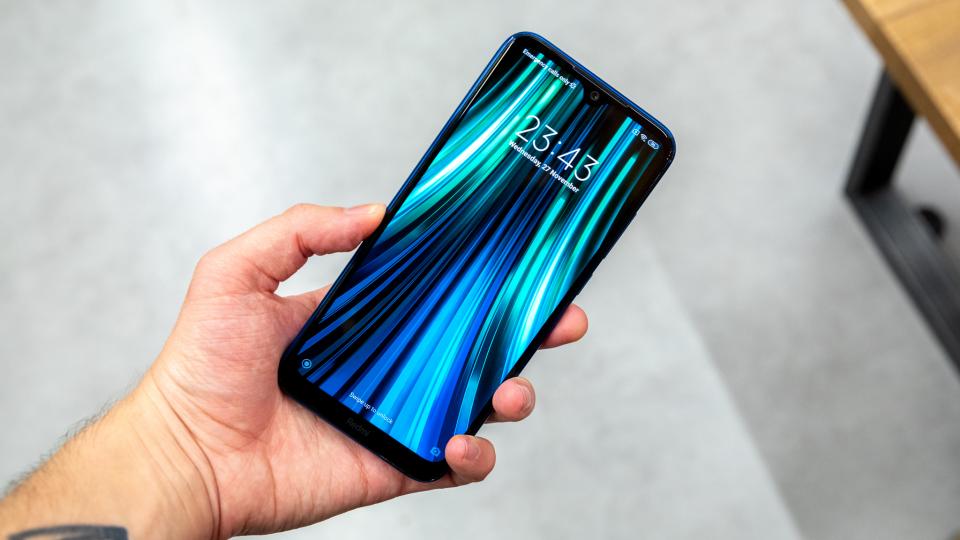
What’s even more impressive is that, performance wise, it’s right up there with a phone that’s over twice the price: the Google Pixel 3a.
The slight downside is that it’s only a touch ahead of its predecessor for multi-core performance, and slightly behind it for single-core. It is, however, comfortably ahead of the Moto G7 Power, and the Nokia 5.1.
But things get quite different once you turn to gaming performance. Here the Pixel 3a really pulls ahead – though it’s still not exactly ‘double the price’ difference. Elsewhere, it’s all pretty similar, though it’s worth noting that the Moto G7 Power has a lower screen resolution, which accounts for their comparable onscreen performance. Take away that advantage, and it’s closer to the Nokia 5.1.
The battery life chart is skewed by the Moto G7 Power – a phone that’s literally named after its legendary stamina. As it goes, the 14hrs 53mins achieved by the Note 8T is pretty damned respectable – just a nose behind the Google Pixel 3a.
Xiaomi Redmi Note 8T review: Camera
Let’s talk cameras, then. There are four of them on the back of the Redmi Note 8T, which is always a pain as it means I have to come up with a new synonym for the word ‘camera’ for each one.
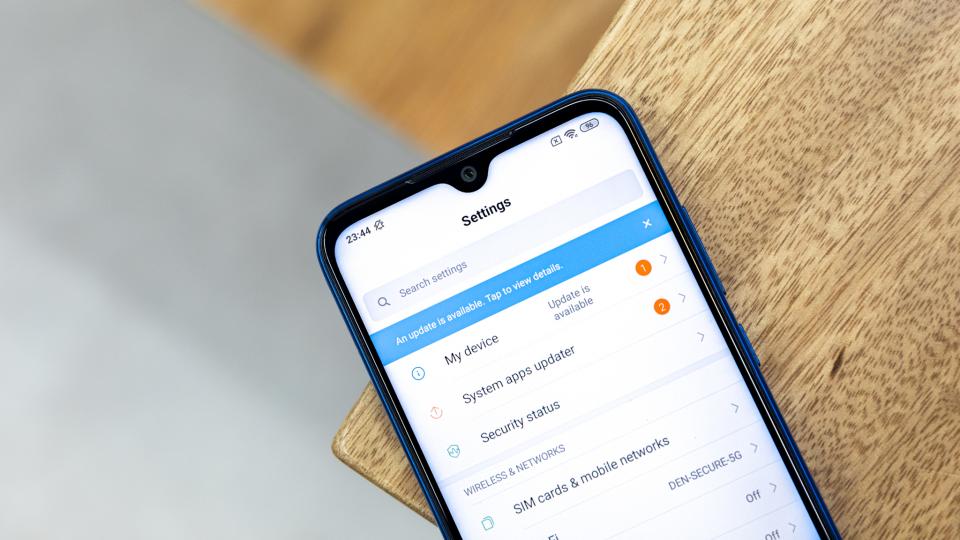
The main snapper is a 48-megapixel, f/1.8 affair, and it’s supported by an 8-megapixel, f/2.2 ultrawide lens. Then there are two more cameras which are more for making up the numbers than anything else: there’s your bog-standard 2-megapixel, f/2.4 depth sensor for arty bokeh shots, and another 2-megapixel, f/2.4 macro lens for taking photos of bugs, flowers and other very small things up close.
To be fair, the latter is very, very good if you like that kind of thing. Look at the detail I managed to get on this £1 coin.
But how is the main camera? Well, the short answer is that it’s extremely good for a phone of this price. As you can see from the outside shot below, on an overcast day at our office, the Redmi Note 8T is more than capable of capturing plenty of detail.
In fact, when put face to face with the £220 Moto G8 Plus, it’s pretty much a dead heat. Sure, the Moto G8 Plus is a little brighter, but in terms of detail and composition it’s a draw. And that’s no bad thing, given we’ve previously stated that the Moto G series has the best phone camera possible under £300.
In tricky indoor low-light conditions, things are markedly worse, albeit far from disastrous. As you can see from the picture, while colour is pretty good, it has a tendency to turn blurry around the edges – particularly on the teddy bear’s fur and on the manequin’s arm.
Crucially, though, that’s about par for the course on cheaper phone cameras, and that includes the brilliant Moto G8 Plus. As you can see in the comparison shot below, they’re basically neck and neck again. If anything, the Moto has a smidgen more visual noise, in fact.
It’s all very good for a £179 phone, and that extends into the selfies – even if the beauty options are pushed hard and give an unpleasant sheen.
As for video, the Redmi Note 8T is capable of recording 720p, 1080p and 4K footage at 30fps, with the option to increase that to 60fps for the 1080p setting. Again, for a phone of this price the footage is pretty good – maybe lacking a touch in detail, but with Electronic Image Stabilisation (EIS) at 1080p, 30fps the video is certainly usable, which is the main thing, and many budget handsets fall at this hurdle.
Xiaomi Redmi Note 8T review: Verdict
And that kind of sums up the Redmi Note 8T. It’s no flagship beater, but it’s far, far better than it has any right to be with change from £200. It has the same grunt as the Moto G8 Plus, narrowly beats it on camera performance and sells for £60 cheaper – what’s not to like?
Frankly, I don’t think you’ll find a better phone for £179. And if you do, please let me know.


